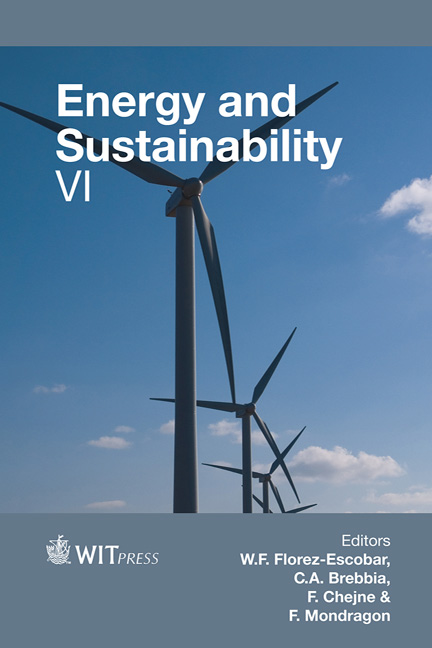Evaluation Of Low-temperature Waste Heat Recovery Technologies For The Cement Industry
Price
Free (open access)
Transaction
Volume
195
Pages
12
Page Range
111 - 122
Published
2015
Size
432 kb
Paper DOI
10.2495/ESUS150101
Copyright
WIT Press
Author(s)
L. Lopera, C. Nieto, A. C. Escudero, C. A. Bustamante, M. C. Fernández
Abstract
Clinker production is a high impact process in the cement industry due to the elevated emission of gases and the energy consumption, inherent to the calcination of limestone used as raw material. Clinker manufacture takes place in a kiln system whose configuration varies depending on the technological update. Within the wide spectrum of existing technologies, rotary kiln system will have generally three major heat energy losses: (1) outflow gases after heating the raw material; (2) the air cooler excess required for cooling clinker leaving the furnace tube to handling temperature; and, (3) the radiation through the entire surface of the system. A typical energy balance for a modern kiln, indicates that about 23% of the heat is lost with waste gases, 11% with the cooler excess gas and 10% by radiation throughout the entire system’s surface. In this work, a technical and economic prefeasibility evaluation is developed for a thermal recovery system of wasted heat in a suspension-preheater kiln for clinker production. The alternatives explored are a heat recovery preheating raw material system and power electricity generation using an Organic Rankine Cycle (ORC). The results of the study show the feed-preheating system is the most attractive alternative in comparison with the option to generate electricity. A sensitivity analysis was performed for each alternative considering changes in the profits obtained and the initial investment in equipment required for each alternative. Also, the impact of the existing tax benefits that exists in Colombia is analysed for this kind of effort.
Keywords
clinker kiln, financial prefeasibility, Organic Rankine Cycle, preheating of feed, waste-heat





